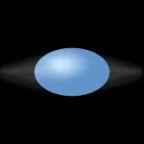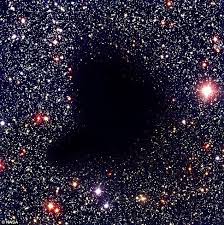Hydrus (snake )& Eridanus (The river Yamuna)
Hydrus is a small constellation in the deep southern sky.
Its name means "male water snake", as opposed to Hydra, a much larger constellation that represents a female water snake.
You can read about it in my another post "Hydra".
Irregular in shape,Hydrus is bordered by Mensa to the southeast, Eridanus to the east, Horologium and Reticulum to the northeast, Phoenix to the north, Tucana to the northwest and west, and Octans to the south;
Lacaille had shortened Hydrus' tail to make space for this last constellation he had drawn up.
Hydrus is not associated with any myths.
It remains below the horizon for most Northern Hemisphere observers
It is a southern constellation, one that wasn’t visible to the ancient Greeks or Romans.
The constellation was mapped by Dutch navigators and it represents the sea snakes they would have seen on their voyages.
Eridanus
The History and mythology
According to one theory, the Greek constellation takes its name from the Babylonian constellation known as the Star of Eridu.
Eridu was an ancient city in the extreme south of Babylonia; situated in the marshy regions it was held sacred to the god Enki-Ea who ruled the cosmic domain of the Abyss - a mythical conception of the fresh-water reservoir below the Earth's surface.
Another association with Eridanus is a series of rivers all around the world.
First conflated with the Nile River in Egypt, the constellation was also identified with the Po River in Italy.
The Greek poet Aratus called the constellation Eridanus, while a number of other sources, including Ptolemy, referred to it as Potamos, which means “the river.”
The Greek astronomer and poet Eratosthenes associated the celestial river with the Nile, the only river that runs from south to north. Hyginus, a Latin author, agreed, pointing out that the bright star Canopus in the constellation Carina was at the end of the river much like the island Canopus lies at the mouth of the great river in Egypt.
The actual constellation, however, represents a river that runs from north to south.
Later, the river came to be identified as the river Po in Italy by Greek and Latin authors.
The stars that correspond to Eridanus are also depicted as a river in Indian astronomy starting close to the head of Orion just below Auriga.
Eridanus is called Srotaswini in Sanskrit, srótas meaning the course of a river or stream.
Specifically, it is depicted as the Ganges on the head of Dakshinamoorthy or Nataraja, a Hindu incarnation of Shiva.
Dakshinamoorthy himself is represented by the constellation Orion.
In Greek mythology, the constellation Eridanus is associated with the story of Phaëton (or Phaëthon), the son of the Sun god Helios and the Oceanid Clymene.
According to legend, Phaëton wanted to drive his father’s chariot across the sky and kept begging for Helios’ permission to do so until the god agreed, advising Phaëton to follow the beaten track where he saw wheel marks.
Phaëton mounted the chariot and the horses, sensing that the driver was lighter, flew upwards into the sky, leaving the familiar track behind.
The inexperienced driver could not control the horses and the reins slipped from his hands.
The chariot plunged so close to the Earth that lands caught fire.
It is said that this was how Libya became a desert, Ethiopians got dark skin, and the seas dried up.
Zeus saw what was going on and had to intervene to prevent further calamity.
He struck Phaëton down with a thunderbolt and, when Phaëton’s hair caught on fire, he leapt from the chariot and fell into the Eridanus.
His father Helios, stricken with grief, did not drive his chariot for days, leaving the world in darkness.
Notable stars in the constellation include Achernar, Agranad;nadimukh. (mouth of river).
one of the brightest stars in the sky, Cursa,a white giant that marks the footstool of Orion,
Acamar, a binary star that marked the end of the celestial river in Ptolemy’s time, and Epsilon Eridani, one of the nearest stars visible to the unaided eye, that hosts a confirmed exoplanet.
Eridanus is home to many interesting deep sky objects, among them the CMB Cold Spot (Eridanus Supervoid), possibly the largest void known,
the Eridanus Group of galaxies,
and the Witch Head Nebula, a reflection nebula illuminated by the bright Rigel in the neighbouring constellation Orion.
So that's the story.
Keep commenting.
We will meet soon with another story..
Till then bye.....















Very nice blog btw do you have any blog regarding opiuchus and serpens constellation. They seem pretty interesting.
ReplyDeleteLovely
ReplyDeleteInteresting stories
ReplyDeleteKeep writing